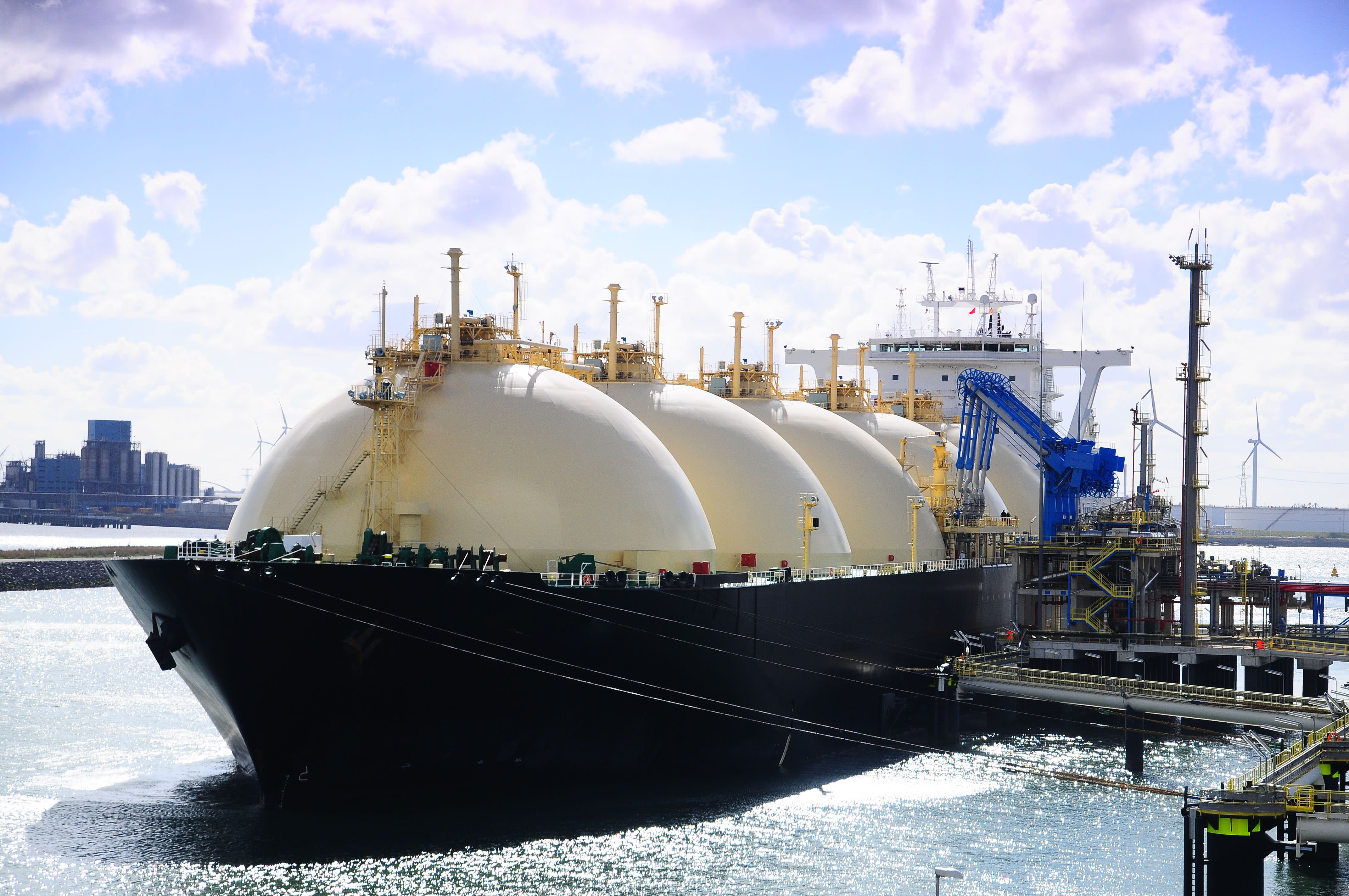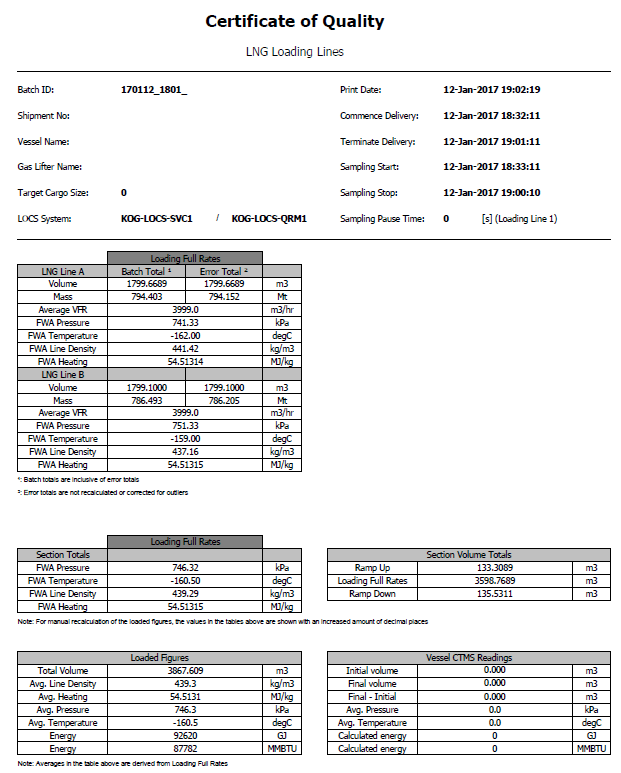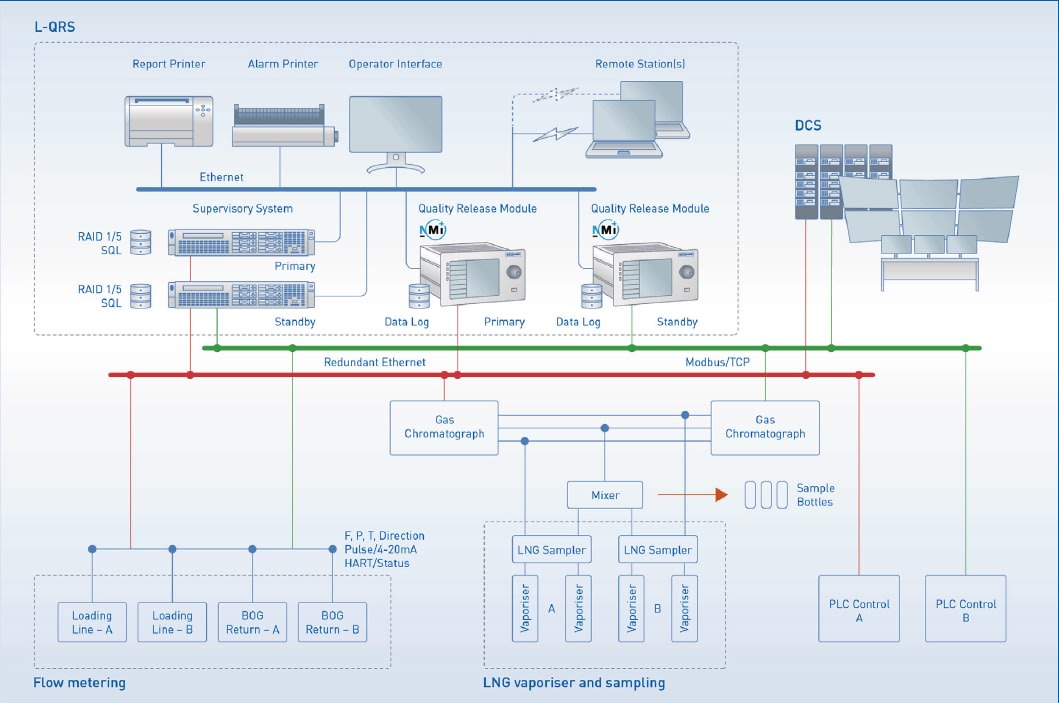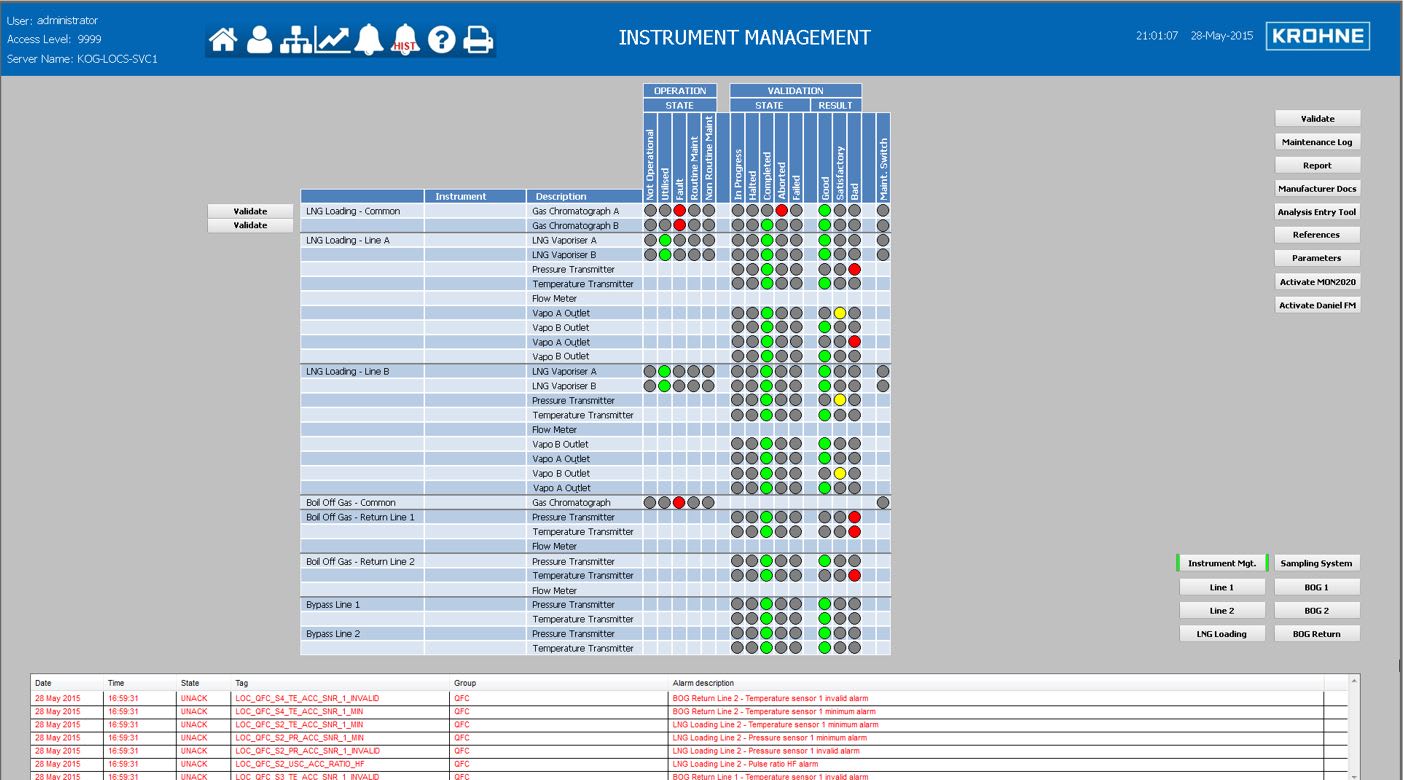Real-time product release of LNG
Application Note | Oil & Gas
- Quality release certificate and bill of lading available directly after LNG loading
- Avoiding disputes due to AMADAS automated instrument validation
- ISO 8943, GPA 2172, ASTM 4784 and GIIGNL calculation certified by NMi

Background
A natural gas hub in Australia has a capacity to produce 8.9 metric tons of LNG per year. The hub operator was looking for methods to obtain real live information on the quality and the quantity of the gas produced and shipped. In their current setup the operator was using off-line lab analysis combined with dynamic flow measurement. The L-QRS solution offered the customer instant availability of bill of lading and quality certificates.
Measurement requirements
Transferring LNG is based on a highly accurate measurement of LNG quantity and quality. In the past, the quantity measurement was mainly based on tank level measurement. In recent years this has been slowly shifting towards dynamic measurement using flowmeters. The quality measurement is usually based on a lab analysis of a representative sample of the LNG that was loaded.
Traditionally, a representative sample is obtained by an automated sampling system that regularly extracts a small amount of LNG during the loading process. After loading has been completed, a sample canister is then available that holds a representative sample of the cargo in the ship. The sample canister is subsequently taken out and transported to the LNG laboratory for analysis. A second similar sample canister is stored on the ship for later analysis in case of a dispute.
While this method has been in use for many years, it has some drawbacks: Analysis can only start after the load has been completed. The quality release certificate is usually only available after the ship left berth. Lab operation and manual calculation of calorific value leave room for disputes. Manual handling of cryogenic sample cans is required.
To improve this process the operating company and KROHNE initiated a solution to measure LNG quality directly during loading.
This includes:
- Automatic calculation of calorific value per typical LNG standards
- 3rd party verification that calculation methods were correctly implemented
- Guarantee performance and traceability of instrumentation used to measure LNG quality
- Generation of quality release certificate and bill of lading immediately after loading has been completed
KROHNE Solution
Based on its SynEnergy metering software, in close cooperation with the gas hub operator, KROHNE developed the L-QRS LNG quality release software package. The L-QRS software includes ISO 8943, GPA 2172, ASTM 4784, ASTM E178 and GIIGNL calculation methods, with correct implementation of these methods certified by NMi. To verify the performance of the instrumentation used for measurement of the LNG, the integrated CalSys module offers analyser management and data acquisition (AMADAS) functionality, amongst others per ASTM D3764, ASTM D6299 and OP 97-30425.
The L-QRS software is configured to work with the existing infrastructure, instrumentation and analyzers such as gas chromatographs. The core software runs on a SUMMIT 8800 Custody Transfer flow computer, with the operator interface integrated in the central HMI.
Customer benefits
The L-QRS software avoids discussion over the amount of energy transferred as the system is indispuable compliant to GSPA. Additional benefits of L-QRS include:
- Product give-away is minimized due to lower system uncertainties and outlier detection
- Instant availability of the bill of lading and quality certificates, avoids costly retrospective corrections once the vessel has departed
- Eliminates human errors in the data processing as the information flows are fully automated
- Reduces maintenance costs by an average of >25% using the AMADAS benefits of Calsys®
- Increased availability of critical instruments (>95%) ensuring constant and reliable quality measurements.
- Structured and consistent validation of analyzers and instruments providing solid traceability and auditability.
- Data is securely stored and together with the certified calculation fully auditable








